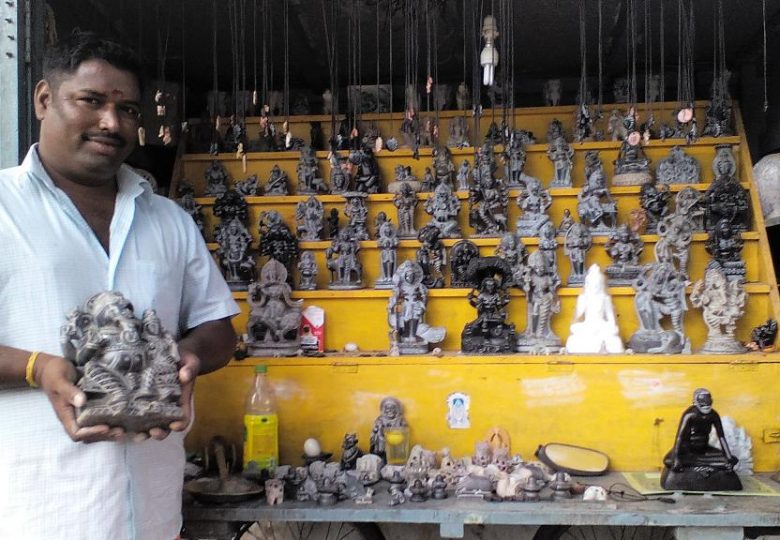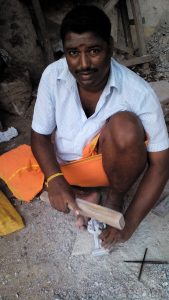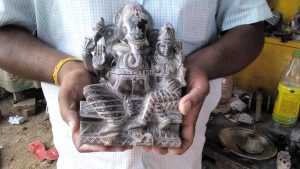Secrets of Shilpis Sculptors Revealed

After I left the Arunachaleshwarar Temple I was surprised to learn a few secrets of the shilpis, the stone sculptors, that are often found near temples. They create beautiful stone images of gods and goddesses and sell them to devotees. That day I was looking at a small Nandi image, the bull vehicle of Lord Shiva and a small lingam, a symbol of Lord Shiva for my altar when my eyes fell on Mother in the form of Goddess Rajarajeshwari holding a sugar cane bow in one of her hands. That is the image I wanted. I was happy and after I paid I gave the shop lady one of my garlands that I had received during my temple visit. She and I were both ‘blissed out’ although for different reasons.

About Shoe Polish and Pencil Graphite
While talking with the shop lady, she showed me how she was working with the soapstone of the images. With a sharp tool she was able to take some of the soapstone off or scratched the dark top layer with a smaller tool to add white lines for decoration like garlands or jewelry on the image. Wherever she had scratched off a part of the soapstone, the original whitish soapstone was revealed. She then applied some black kind of paste to cover those newly created white areas. Curious as I was I noticed her utterly black hands. When she closed the black paste container I saw it was black shoe polish.
Soapstone and Other Images
On another occasion I visited with one of the shilpis near Ramana Ashram on the main road. This sculptor by name G. Balan hammers and chiseled away sitting in dust and dirt next to the main road, even during the Indian summer heat.

He proudly showed me his handmade images. He also showed me a certificate from the Government about his craftsmanship. Balan explained to me that he can chisel about anything from a photograph that the customer brings. More popular images he sculpts from memory.
I learned that grayish looking images are made out of soapstone. They are then enhanced with graphite, pencil lead. The tip of the pencil is rubbed against sandpaper. The graphite powder is applied with a finger to the image giving it a rich grayish coating.
Different stones are used for the images. Some are whitish; others are reddish or have a little green in it. Balan assures me that none of the stones used for sculpting come from Arunachala. Arunachala’s stones are too hard for sculpting he said. Be enthralled by these divinely looking images of gods and goddesses. Perhaps one or the other finds its way to your puja room or home altar. Most shilpis even send images oversees so you don’t have to carry it during the flight.
